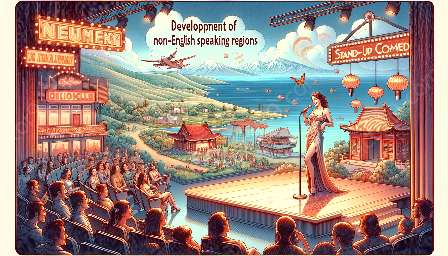Stand-up comedy is a form of entertainment that relies heavily on cultural nuances, language, and timing to deliver successful punchlines and evoke laughter. When it comes to translating stand-up comedy across different languages and cultures, numerous challenges arise. These challenges are rooted in the unique nature of stand-up comedy as a cultural and linguistic art form, its historical development, and its role as a reflection of societal norms and values.
History of Stand-Up Comedy
The history of stand-up comedy dates back to ancient civilizations, with roots in oral storytelling and performance. From jesters in medieval courts to vaudeville stages and the modern comedy clubs of today, stand-up comedy has evolved as a platform for comedians to express their thoughts, observations, and humor to a live audience. Over time, it has become a distinct art form, deeply rooted in the social, political, and cultural movements of each era.
As stand-up comedy has evolved, it has become increasingly tied to the linguistic and cultural context in which it is performed. Each culture has its own unique sense of humor, comedic timing, and collective experiences. This makes the translation of stand-up comedy a complex and intricate task that requires a deep understanding of both the original and target languages and cultures.
Challenges of Translating Stand-Up Comedy
One of the primary challenges of translating stand-up comedy lies in the cultural differences that impact humor. What may be considered hilarious in one culture can be met with confusion or offense in another. For example, wordplay, puns, and references to specific cultural events may not have a direct equivalent in another language, leading to the loss of comedic effect. Additionally, the intonation, body language, and comedic timing used by the comedian play a crucial role in delivering a joke, and these elements may not transfer seamlessly across languages.
Furthermore, the context of the jokes and the societal norms they address are often culture-specific, making it challenging to convey the intended message in a way that resonates with a diverse audience. Translators must navigate cultural taboos, political sensitivities, and historical contexts to ensure that the humor translates effectively without causing misunderstanding or offense.
Another significant challenge is the preservation of the comedian's unique style and voice in the translation process. Stand-up comedians often have distinctive personalities, word choices, and comedic personas that contribute to their appeal. Translating these elements while maintaining the authenticity and comedic impact can be extremely demanding.
Relevance to Stand-Up Comedy
The challenges of translating stand-up comedy highlight the intricate nature of this comedic art form, as well as its significance in reflecting and shaping cultural identities. Stand-up comedy serves as a mirror to societal norms, values, and experiences, and the complexities of translation underscore the multifaceted layers of cultural expression embedded within comedic routines.
Despite the challenges, the global popularity of stand-up comedy has led to an increasing demand for translated performances to cater to diverse audiences. The successful translation of stand-up comedy requires not only linguistic expertise but also a deep understanding of the cultural context in which the comedy is being delivered.
Conclusion
Translating stand-up comedy across different languages and cultures presents a myriad of challenges, stemming from the intricacies of humor, cultural sensitivities, and the preservation of comedic style and voice. These challenges underscore the unique nature of stand-up comedy as a cultural and linguistic art form, and its relevance in reflecting and shaping societal norms and values. As the global audience for stand-up comedy continues to expand, the art of translation will play a crucial role in making comedic performances accessible and enjoyable across diverse linguistic and cultural landscapes.
























